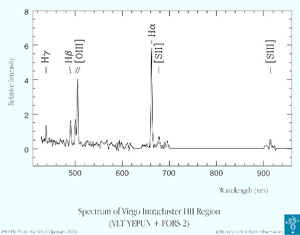This area deals with the fundamental laws and building blocks of nature and how they interact, the properties and the behavior of matter, and research into space and time and their structures.
innovations-report provides in-depth reports and articles on subjects such as astrophysics, laser technologies, nuclear, quantum, particle and solid-state physics, nanotechnologies, planetary research and findings (Mars, Venus) and developments related to the Hubble Telescope.

In a milestone for global science collaboration, CERN took delivery today of the first US-built contribution to what will be the world’s highest-energy particle accelerator. The superconducting magnet, built at the US Brookhaven National Laboratory will become a key component of the Large Hadron Collider (LHC).
It is the first of several advanced accelerator elements the US will provide for the LHC under the terms of a 1998 agreement between CERN and the US Department of Energy (DOE)

Ultrafast lasers helping to make some of the shortest pulses of light ever seen in the UK will be at the heart of a new system to capture the movements of electrons as they whizz around the nucleus of atoms.
A UKP3.5 million research grant from the UK Research Councils’ Basic Technology Programme announced today has been awarded to a team of scientists to develop and build the first attosecond laser system capable of freeze-framing and controlling the motion of electrons.
Researcher

Subaru and VLT Join Forces in New Study of Virgo Galaxy Cluster
At a distance of some 50 million light-years, the Virgo Cluster is the nearest galaxy cluster. It is located in the zodiacal constellation of the same name (The Virgin) and is a large and dense assembly of hundreds of galaxies.
The “intracluster” space between the Virgo galaxies is permeated by hot X-ray emitting gas and, as has become clear recently, by a sparse “intracluster population of stars”.
So fa

To be able to detect gravitation waves in space, physicist have to measure truly minimal displacements: ten billion times smaller than the size of an atom. An improved superconducting sensor is a suitable candidate for this job, Martin Podt of the University of Twente now states in his PhD thesis. He has improved the sensitivity of a so-called ‘SQUID’ in way that it can be combined with a large ball-shaped gravitation detector. Podt succeeds in this by improving the sensitivity. He integrates the sen

Scientists who built and will control the instruments to investigate plasma changes around a comet describe their contribution to the ten year long mission at a pre-launch press briefing in London.
While the actual launch date for the European Space Agency’s Rosetta mission has yet to be confirmed, the scientists, engineers and technicians behind the plasma-detecting instruments on board the spacecraft are all ready to begin the journey to comet Wirtanen they hope will return a r

Researchers at the University of Rochester have uncovered how giant magnetic fields up to a billion, billion miles across, such as the one that envelopes our galaxy, are able to take shape despite a mystery that suggested they should collapse almost before they’d begun to form. Astrophysicists have long believed that as these large magnetic fields grow, opposing small-scale fields should grow more quickly, thwarting the evolution of any giant magnetic field. The team discovered instead that the